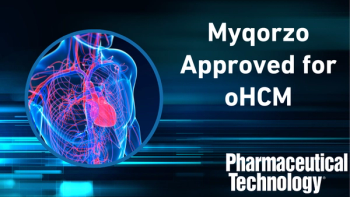
- Pharmaceutical Technology-06-02-2007
- Volume 31
- Issue 6
Signature Authentication Can Restore Confidence
Signature authentication technology has evolved to become a stong tool for improving confidence in verification.
Whether to thwart illicit activities or improve compliance reporting, pharmaceutical sales operations must have confidence in the paper-based and electronic signatures they gather from physicians while in the field. The need to manage signature capture, especially in the pharmaceutical industry, is not a new challenge. FDA 21 CFR Part 11 guides the industry on this topic, as it relates to electronic signature capture. Since confirming orders or authorizing receipt of drug samples necessitates a physician's signature, the ability to authenticate a signature is the key variable in these compliance-centric processes.
Some organizations rely on paper-based signatures instead of e-signatures. In both cases, pharmaceutical companies must have the processes in place that confidently ensure that the captured signatures are genuine, are being obtained in the correct manner, and for the correct purpose. Previously, this "confidence" was based on a small random sampling of signatures that were printed and mailed to the signatories with a request that they confirm the printed signature as their own.
The primary flaw in this process is that it is based on a small sampling of the signature database, and that it relies strongly on the signatories' willingness to respond accurately to the confirmation letter. Unfortunately, because physicians now receive a barrage of these confirmation letters from pharmaceutical vendors, the quality of the response rates and resulting accuracy have diminished.
Technology has evolved to enable signatures, both electronic and on paper, to be digitally compared against previous signatures from the same author, and then rated on a scale of confidence for authenticity.
Sam Barclay
For authentication, a signature is an image. With sophisticated pattern recognition technology, the signature image is converted into digital code. The images are then compared mathematically in hundreds of ways, and the outcome is a confidence score. Equally effective in paper and electronic signatures, the confidence score indicates the likelihood that a given signature instance is a forgery or an authentic. To improve the accuracy of the process, several previously captured signatures can be used to create a reference signature, which is in effect an average of a group of signatures.
Any signatures highlighted as suspicious can then be sent for personal review or can be used to create confirmation letters to physicians. Because only suspicious signatures are sent to doctors, fewer letters are generated, and they will be targeted to only those doctors who must respond.
The benefits of electronic signature capture, as well as the ability to store and report on electronic records, are enormous. Some organizations have been reluctant to move off paper-based signatures until the risk of signature fraud can be properly mitigated through technology. Today, advances in e-signature authentication feature accurate character recognition, noise-filtering algorithms, and extraction of key data with extreme accuracy. New technology can also recognize all types of characters, such as machine print, handprint, alphanumeric sequences, international characters, and gray-scale images.
Signature authentication technology improves the complexities of the signature authentication process, increases the confidence in the outcomes and related business and compliance decisions, while enhancing customer experience.
Sam Barclay is vice-president of business development at StayinFront (Fairfield, NJ), tel. 973.461.4800,
Articles in this issue
over 18 years ago
Out of Date, Out of Touchover 18 years ago
Building Monoclonal Antibody Productionover 18 years ago
Pharma Capsulesover 18 years ago
Nanotechnology Advances in Drug Deliveryover 18 years ago
Setting an Exampleover 18 years ago
Pharmaceutical Technology's Manufacturers' Rankingsover 18 years ago
Manufacturing Issues Shape Follow-On Biologics Debateover 18 years ago
Is Your Company Lucky or Smart?over 18 years ago
In the Spotlight June 2007Newsletter
Get the essential updates shaping the future of pharma manufacturing and compliance—subscribe today to Pharmaceutical Technology and never miss a breakthrough.




